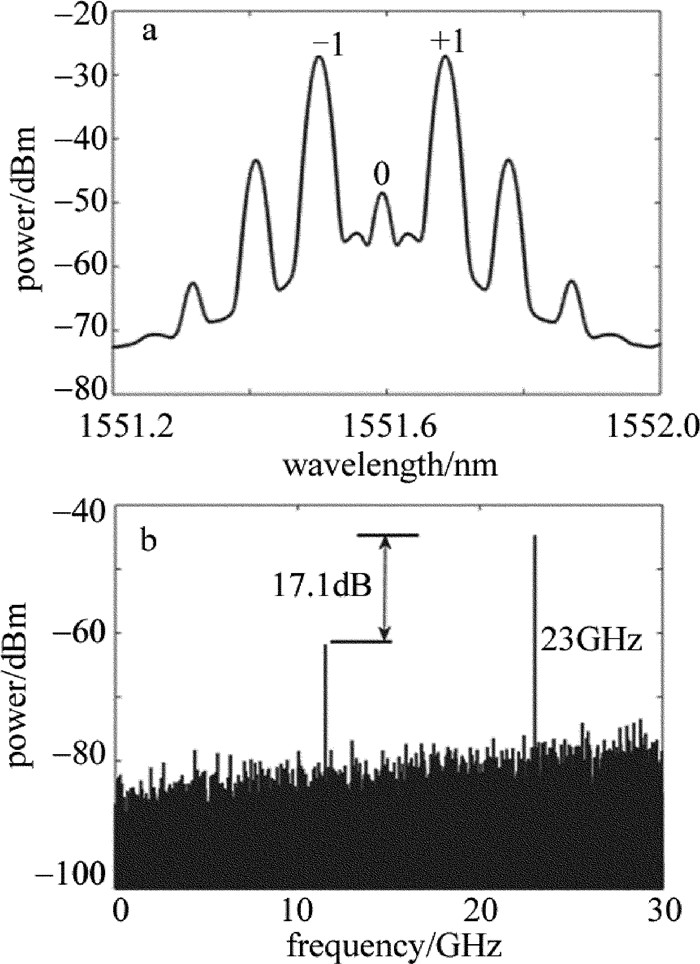HTML
-
未来的卫星通信系统将朝着高频、宽带、大容量的方向发展。随着工作频段的提高,系统对微波器件的尺寸、性能和制作工艺要求越来越高,系统的体积和重量由于星上转发路数的增多进一步增大和加重,另一方面, 由于星上特殊环境,系统受温度影响大、受电磁干扰强,这是星上微波通信目前面临的主要问题。光纤通信与其它通信方式相比较,具有传输速率高、传输损耗低、抗电磁干扰能力强、温度稳定性好、系统体积小、重量轻的优势。将光纤通信技术应用于星上微波信号产生与转发中的星上微波光子转发技术可以有效解决上述问题。
星上微波光子技术通过光子方法实现星上微波信号的产生、传输和频率转换等功能。将不同频段、不同带宽、不同格式的微波信号直接在光纤链路上透明宽带传输,利用光子变频解决高频段通信信号变频的带宽限制,有效降低星上载荷质量、体积,提高卫星的抗干扰能力[3-4]。现有的实现方案大多采用将微波本振信号的光学产生与光纤传输分开设计,利用独立的系统实现上述各个功能,如果能将微波信号的产生、处理与传输结合起来设计,融为一个系统,这样必然会降低系统的体积、重量和功耗,提高微波光子转发效率。
光电振荡器是一种新型的微波信号发生器,可以将激光器的光能量转化为微波能量,具有光、电两种输出口。利用光电振荡器的电输出口作为本地振荡源,能产生几个吉赫兹甚至上百吉赫兹,低相位噪声的高品质信号[5-10],利用光电振荡器的光输出口结合光电振荡器结构中的低损耗光纤实现微波光子转发,采用光滤波器产生相应的射频信号。这些优良特性可以有效地应用于卫星通信的微波光子转发系统中,本文中提出将高性能微波本振源光学生成与微波光子分发结合起来设计,充分发挥了微波技术与光纤通信的各自优点,对卫星通信中的微波光子转发系统具有重要意义。
-
基于光电振荡器的星上光子转发系统框图如图 1所示。系统由本振源和多路输出两部分组成,本振源为一个单环光电振荡器,在利用光学方法产生射频信号的同时实现了微波光子信号转发。利用光源、马赫-曾德尔调制器(Mach-Zehnder modulator, MZM)、滤波器、放大器、掺铒光纤放大器(erbium-doped optical fiber amplifier, EDFA)和光电探测器构成的一个正反馈环路,由可调谐激光器产生的单一波长的光源,经过偏振控制器和调制器,被调制成带有边带的载波光信号,调整调制器的直流偏置点以及反馈信号的驱动电压来获得最大消光比,经过光电检测器检测得到射频信号,用电放大器将其放大,通过滤波器进行选频,把不需要的模式滤除,经过一段时间的振荡选频,系统进入了稳定振荡状态,产生高频谱纯度,低相位噪声的信号。通过EDFA控制光功率大小,利用光电振荡环路中的光纤将产生的微波信号传递到多路输出节点。

Figure 1. Structure of microwave photonic signal distribution system based on optoelectronic oscillator
图 1中本振源电光调制过程中产生的多阶边带信号,送入光滤波器进行滤波。光滤波器采用光纤布喇格光栅(fiber Bragg grating, FBG)滤波器。FBG滤波器功能相当于陷波器,能够抑制中心载波滤出边带信号。光边带信号送入光电检测器进行光电变换,从而拍频产生倍频信号。
-
实验中,激光器采用的是半导体激光器,波长为1551.6nm;外调制器的调制带宽为12GHz;光纤长度为2km;电放大器的增益区间为10GHz~12GHz,EDFA的增益大小为30dB;滤波器的通带频率为11.45GHz~11.6GHz;光电探测器的检测带宽为33GHz。激光器、外调制器、放大器、滤波器和光电探测器构成本地光电振荡信号源。
利用光谱仪和电频谱仪可以分别测得转发信号的光谱图和频谱图,如图 2所示。该光谱图的测试范围为0.8nm,可以明显看出, 经过电光调制后得到的信号携带了3阶边带信号,将其送入光电检测器中可以拍频得到与本地端频率一致的射频信号,与产生的二倍频信号相比,其功率差为44.4dB,得到了频谱较为纯净的射频信号。
通过分析产生射频信号的相位噪声,可以得到第1路输出接收到原始频率信号的相位噪声,如图 3所示。从图可以观察到,第1路输出接收到的11.5GHz信号的相位噪声为-100.5dBc/Hz@10kHz,第1路输出得到了性能较好的射频信号。
第2路输出利用光滤波器将光载波滤除,保留调制信号的±1阶边带,通过光电检测器拍频,得到信号的频率为本地振荡信号源频率的2倍,滤波后的光信号的光谱图和拍频得到的二倍频信号频谱如图 4所示。该光谱图的测试范围为0.8nm,可以明显看出,经过光滤波器后得到的信号,其光载波信号被明显抑制,只保留调制得到的1阶边带信号,将其送入光电检测器中可以拍频得到23GHz的二倍频信号,与产生的原始频率信号相比,其功率差为17.1dB。
图 5为第2路输出接收到二倍频信号的相位噪声。可以观察到,第2路输出接收到的23GHz信号的相位噪声为-86.6dBc/Hz@10kHz,与第1路输出的信号相比,其性能有一定程度的下降。
-
基于光电振荡器完成了11.5GHz微波本振信号的产生,通过光纤、光滤波器和光电检测器实现了微波本振及其倍频信号的多路输出,验证了光电振荡器可以实现微波光子信号的产生与转发。实验中通过光电振荡环路产生了的微波本振信号的频率可以高达几十吉赫兹,并且不受“电子瓶颈”效应影响,光纤传输微波本振信号可以使得系统的体积小、重量轻,通过改变光子滤波器的中心频率和通带宽度可以方便地实现微波信号的变频。实验表明,该方法可以方便地产生高频微波信号,并且相位噪声可以低至-100.5dBc/Hz@10kHz。这对星上微波光子转发具有重大意义。

 Map
Map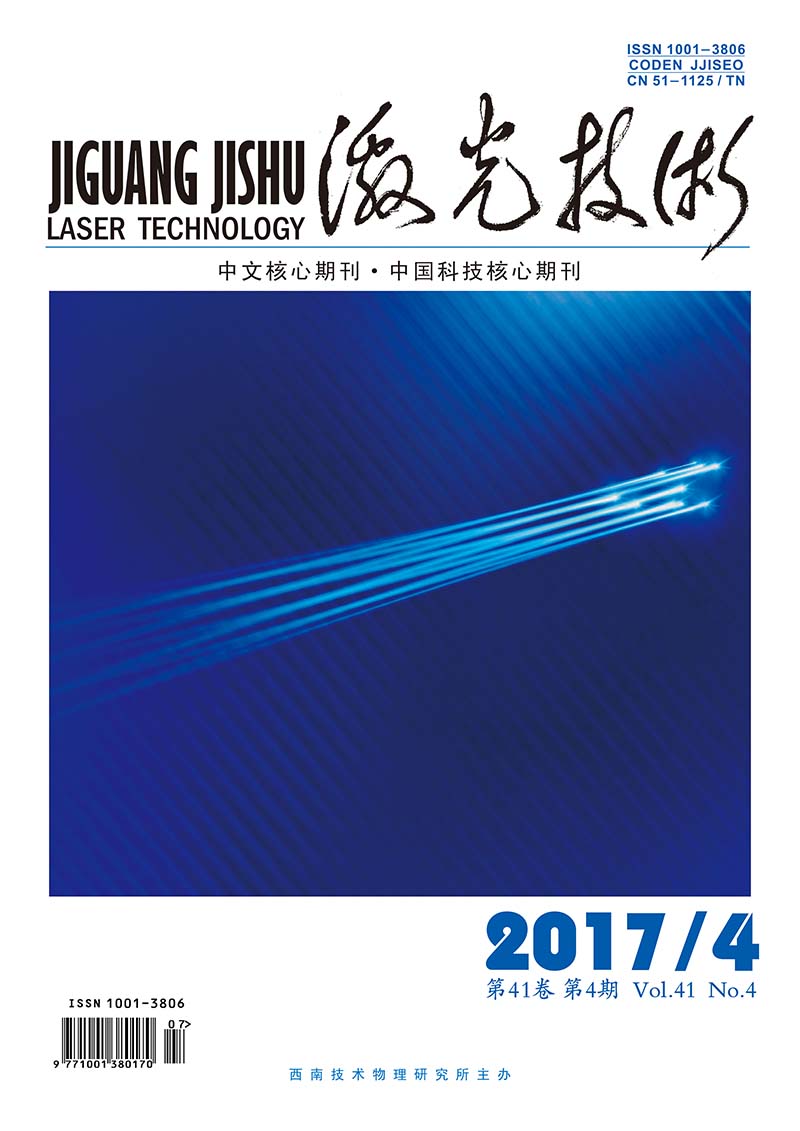


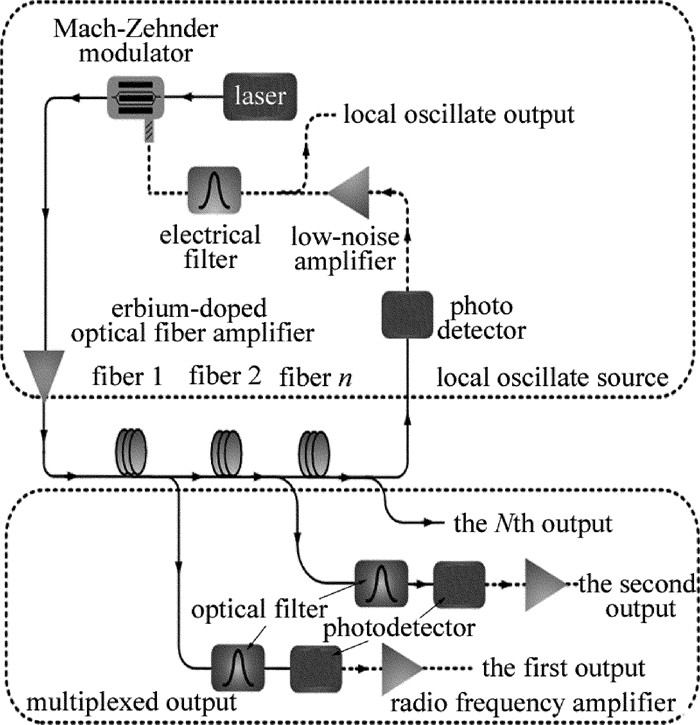

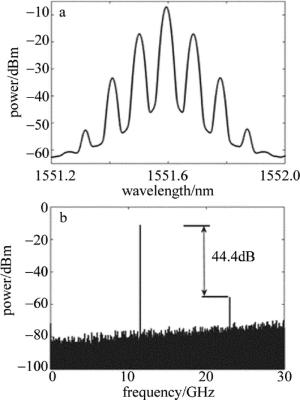
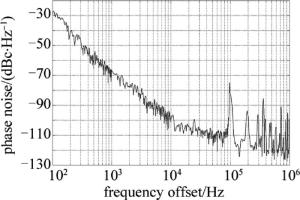
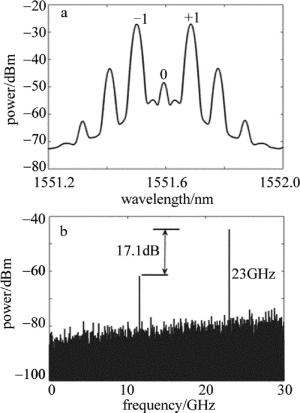
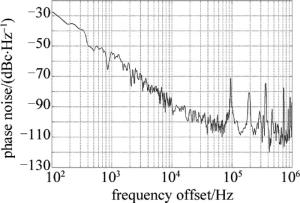
 DownLoad:
DownLoad:


